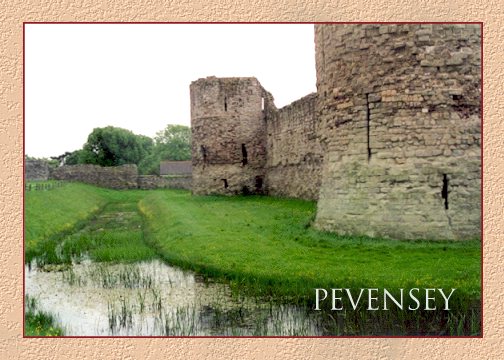
Now situated inland, Pevensey Castle (Anderida) was one of the forts on the Saxon Shore (litus Saxonicum) that guarded the southeastern coast of England. Originally thought to have been built in the mid-fourth century, it actually seems to have been constructed c.AD 290.
In AD 286, Carausius, who had risen to prominence during the reign of Diocletian as commander of the fleet in the English Channel defending against Saxon raiders, was accused of retaining for himself the goods and treasure that had been recovered. Sentenced to be executed, he took refuge in Britain, his position strong enough that he was able to usurp power and proclaim himself emperor. Using Frankish troops, he retained control of northern Gaul but eventually was defeated and, in AD 293, assassinated by Allectus, his finance minister, who assumed the title. Three years later, Allectus, in turn, was deposed when Constantius I invaded Britain.
The fort first is documented in the Notitia Dignitatum ("List of Offices"), a late fourth-century list of the civil and military commands (dignities) of the Roman world. There, is the only mention of the Comes Litoris Saxonici (Count of the Saxon Shore), who had under his command nine listed garrisons which were called the Saxon Shore. In AD 491, the Anglo-Saxon Chronicle records that Pevensey was besieged by Saxon raiders who "killed all who lived in there; there was not even one Briton left there."
Six centuries later, on September 28, 1066, William, Duke of Normandy, sailed into the harbor at Pevensey and erected a temporary fort within its walls to shelter his troops before marching the next day to meet King Harold at Hastings.
The medieval inner bailey is pictured in the foreground above, with the Roman walls and towers, the largest of any such Roman fort, in the distance. Just up the coast, on the way to Richborough, is the lighthouse at Dover.